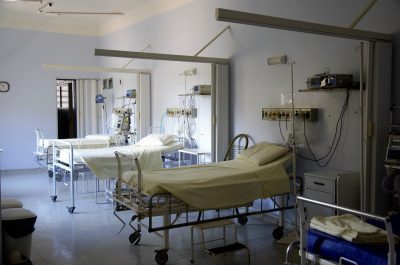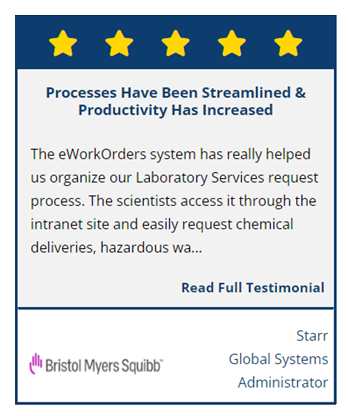
Hospitals stand as indispensable institutions, entrusted with the responsibility of delivering consistent and vital services. This assurance hinges on the diligence of facility managers who prioritize hospital maintenance. The significance magnifies within the healthcare realm where even minor setbacks like downtime, equipment malfunctions, or asset glitches can profoundly disturb operations, transcending inconvenience to potentially impacting lives.
The silver lining lies in the realm of preventive measures. By embracing optimal practices and harnessing the capabilities of maintenance software, the integrity of physical assets and infrastructure can be upheld. This strategic approach facilitates the efficient orchestration and harmonization of all facets of healthcare facilities management, ensuring seamless operations. Let’s delve into how these strategies unfold.
The Critical Nexus: Hospital Maintenance and Patient Care
In the intricate tapestry of healthcare, the reliability of hospital equipment is a pivotal factor. Even a minor glitch can have grave implications for patient care. The operational continuity of hospitals relies on effective maintenance practices to prevent downtime, equipment failures, and disruptions that could compromise patient well-being.
Navigating the Unique Landscape of Hospitals
Hospitals, unlike conventional buildings, house an array of intricate units. These units, such as diagnostics, clinical laboratories, and surgery halls, operate under stringent procedures monitored by regulatory bodies. The interplay of these units necessitates meticulous management to ensure seamless functionality.
Key Functions of Healthcare Facilities Management
Healthcare Facilities Management (HFM) shares the core purpose of all maintenance departments: optimizing asset reliability and performance within budgetary and regulatory boundaries. It encompasses diverse responsibilities:
- Managing day-to-day maintenance operations and resources
- Proactively maintaining assets and infrastructure
- Ensuring compliance with regulatory requirements
- Managing maintenance vendors and contractors
- Overseeing capital projects for upgrades and new assets
- Maintaining oversight of maintenance budgets
- And more.
Addressing the 24/7 Challenge of Hospital Maintenance
Step into a hospital at any hour, day or night, and you’ll witness a constant flurry of vital activities. However, for the maintenance team, this dynamic environment presents a unique challenge. Balancing the uninterrupted operation of numerous systems while finding windows for scheduled maintenance becomes an intricate task.
In practical execution, the maintenance team must cultivate a meticulously crafted schedule, likely involving staggered servicing of various machines. In cases where maintenance demands the temporary shutdown of equipment (especially high-risk assets like electrical systems), contingency plans and backup solutions must be in place. Moreover, routine tasks should be scheduled with sufficient flexibility to allow for potential postponements.
To address these complex demands, the maintenance team must embrace a 24/7 working approach. They must be ever-ready to seize fleeting moments to swiftly attend to machines that unexpectedly fall idle, ensuring the delicate equilibrium of hospital operations.
Avoiding Catastrophe: The Importance of Meticulous Maintenance
Within the healthcare realm, the repercussions of maintenance mishaps are both profound and far-reaching. The dire consequences of equipment failure during critical medical procedures can jeopardize patient safety and impact the hospital’s reputation. In this high-stakes environment, hospitals simply cannot afford errors, leaving no margin for equipment malfunctions. As such, the implementation of stringent maintenance practices becomes not just a necessity but a foundational pillar of patient care.
When considering the intricacies of hospital maintenance, it’s important to recognize that the consequences extend beyond immediate patient well-being. The hospital’s overall operational efficiency and reputation are at stake. A minor malfunction could result in treatment delays, procedural complications, or even the need to reschedule surgeries—all of which can lead to patient dissatisfaction and potential legal implications. To mitigate these risks, a comprehensive approach to maintenance is crucial, encompassing regular servicing, adherence to manufacturer guidelines, and a rigorous focus on cleaning and disinfection protocols. This holistic maintenance strategy not only safeguards patients but also bolsters the hospital’s reliability and reputation within the healthcare ecosystem.
Navigating Compliance: A Complex Landscape
According to the American Hospital Association, hospitals are tasked with adhering to 629 regulatory mandates spanning nine distinct domains. The effectiveness and execution of your hospital’s maintenance management program significantly influence the outcome of compliance audits. Introducing software like CMMS proves highly effective in orchestrating maintenance resources, establishing comprehensive schedules, and crucially, maintaining meticulous oversight.
However, relying solely on software might fall short of your aspirations. Your aim is not solely the completion of tasks, but their precise execution, driven by more than just regulatory motives. This is where standardization emerges as a pivotal strategy. By amalgamating compliance prerequisites with best practices, standardized operating procedures (SOPs) can be forged. These SOPs should be seamlessly integrated into employee onboarding, and they can be conveniently accessed through CMMS or other cloud-based applications, ensuring universal accessibility. The potency of SOPs extends beyond maintenance, serving to optimize workflows across diverse departments.
Balancing Cost and Care: Controlling Maintenance Expenses
While patient care takes precedence, fiscal constraints are a reality. Hospitals are significant financial entities, with maintenance management often being a major cost center. Budgetary prudence demands strategic approaches like energy management, inventory control, and proactive maintenance to optimize expenses without compromising care.
Best Practices for Hospital Maintenance
Proactive Maintenance Management
Prioritize preventive maintenance to forestall equipment breakdowns.
Explore predictive technology to forecast potential issues.
Digitize Inventory and Asset Tracking
Utilize CMMS or inventory software for efficient spare parts management.
Implement asset tracking to prevent theft and redundant purchases.
Asset Prioritization
Assign value hierarchy to assets, focusing on critical equipment.
Tailor testing and inspections based on OEM recommendations and compliance standards.
Regular In-House Audits
Foster a proactive maintenance culture with routine internal assessments.
Provide reliable data for audits and disputes through comprehensive recording in CMMS.
Computerized Maintenance Management Software (CMMS)
Streamline diverse maintenance tasks with modern software solutions like eWorkOrders CMMS.
Centralize maintenance data to track costs and identify improvements.
Skilled Maintenance Workforce
Invest in skilled maintenance personnel to mitigate operational issues and regulatory fines.
Ensure proper training for medical staff interacting with sensitive equipment.
Building an Effective Maintenance Team
Facilities Manager: Oversees maintenance planning and execution on a strategic level.
Maintenance Supervisor: Bridges communication between the team and facilities manager, coordinating daily tasks.
Hospital Maintenance Technicians: Skilled workers handling machine repair and servicing, including electricians, plumbers, HVAC technicians, and medical equipment technicians.
Janitorial Staff: Responsible for cleaning tasks and maintenance of external grounds.
Maintenance Contractors: Outsource specialized tasks like elevator maintenance or plumbing to experts.
Conclusion: Caring for the Caregivers
Hospital maintenance isn’t merely a duty—it’s a pact hospitals make to uphold the health of their equipment, which directly impacts patient lives. By embracing sophisticated maintenance practices, hospitals ensure uninterrupted service delivery and alleviate the financial burden of emergency repairs. Ultimately, the care of physical assets mirrors the care hospitals provide to their patients.
Empower Your Hospital’s Maintenance Journey with eWorkOrders
For a seamless transformation of your hospital’s maintenance practices, turn to eWorkOrders. Our comprehensive Computerized Maintenance Management System empowers hospitals to transition from reactive to proactive maintenance, enhancing operational efficiency and patient care. Embark on your journey to empowered maintenance—schedule a demo or contact us to learn more about the capabilities of eWorkOrders for your medical facility.
Additional Resources
Importance Of Laboratory Maintenance
Medical Center Improved Hospital Maintenance and Customer Satisfaction
Other Articles & Helpful Tips
Checklists
Frequently Asked Questions (FAQs)
What is CMMS in Healthcare?
CMMS, or Computerized Maintenance Management System, in the context of healthcare, refers to a software solution designed to streamline and optimize maintenance operations within medical facilities. It serves as a centralized platform that enables healthcare organizations to efficiently manage the maintenance, repair, and upkeep of medical equipment, facilities, and infrastructure. CMMS in healthcare assists in tasks such as scheduling preventive maintenance, tracking work orders, managing spare parts inventory, and, monitoring equipment performance, and ensuring compliance with regulatory standards. By digitizing and automating these processes, CMMS enhances operational efficiency, reduces downtime, extends equipment lifespan, improves patient safety, and aids in cost-effective resource allocation, ultimately contributing to the overall quality of patient care.
What is an example of a CMMS?
What challenges do hospitals face in maintenance?
Hospitals face challenges like operating 24/7, coordinating maintenance around patient care, complying with strict regulations, and managing a diverse range of equipment. Balancing all these factors while delivering quality care is a constant challenge.
How can hospitals control maintenance costs without compromising care?
Hospitals can control costs by implementing energy-efficient practices, optimizing inventory management, prioritizing maintenance for critical assets, and embracing proactive maintenance to prevent costly breakdowns.
How can hospitals build a competent maintenance team?
Building a competent team involves recruiting skilled technicians, providing ongoing training, and ensuring that the team stays updated with the latest equipment and technology. Certification programs like CBET and BMD are valuable for training.
Why should hospitals consider outsourcing maintenance tasks?
Hospitals may outsource specialized maintenance tasks to experts when they lack in-house resources or expertise. This allows hospitals to focus on their core functions while ensuring that critical equipment is maintained by professionals.
What benefits does proactive maintenance offer to hospitals?
Proactive maintenance prevents unexpected equipment breakdowns, reduces downtime, extends equipment lifespan, and enhances patient safety. It also enables hospitals to plan maintenance activities strategically, optimizing resource allocation.
What Our Customers Are Saying
Customer Case Studies
Customer Testimonials

